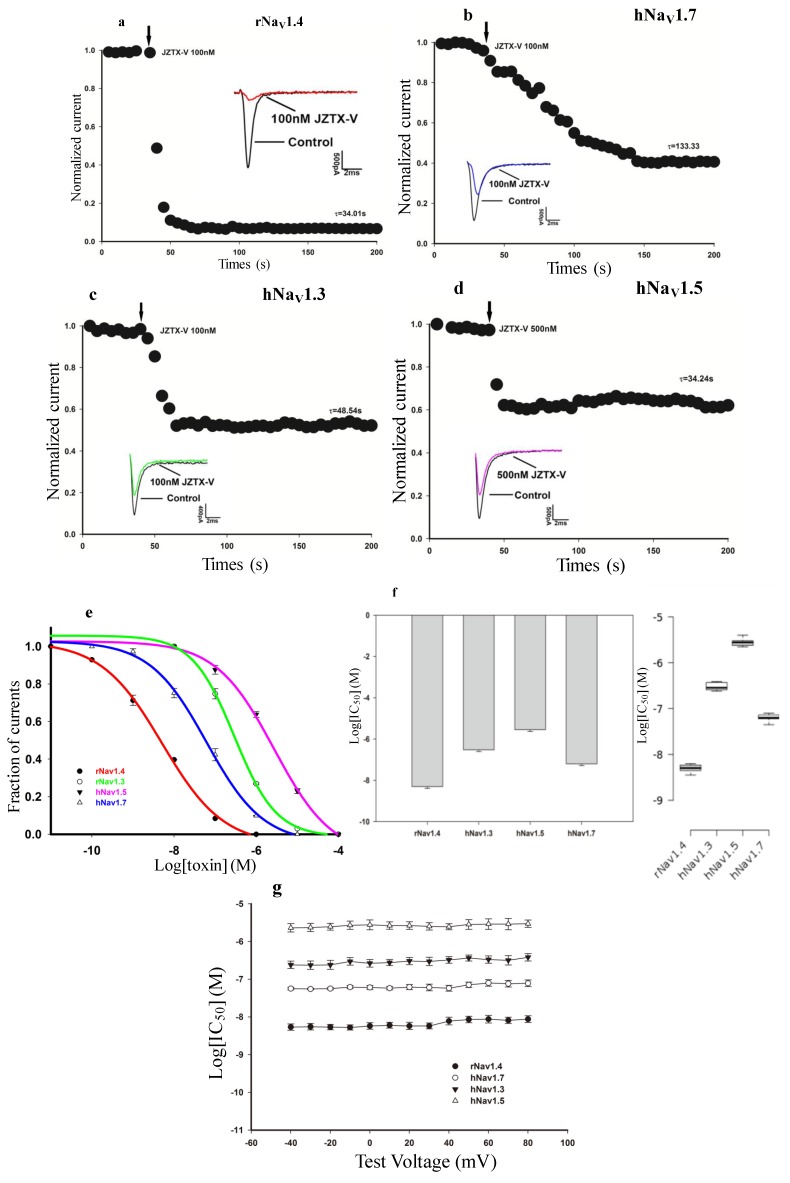Figure 1.
JZTX-V (Jingzhaotoxin-V) differentially blocks four wild-type voltage-gated sodium channel isoforms expressed in HEK (human embryonic kidney) 293 cells. Rat rNaV1.4 (rat voltage-gated sodium channels subtype 1.4) (a); human hNaV1.7 (human voltage-gated sodium channels subtype 1.7) (b); hNaV1.3 (c) and hNaV1.5 (d) sodium channels were exposed to JZTX-V. All inward current traces (inset) were elicited by a 50-ms depolarizing potential of −10 mV from a holding potential of −100 mV every 5 s. Data are normalized to the maximum peak current amplitude. After treatment with 100 nM or 500 nM JZTX-V, inward current of rNaV1.4 (a) was inhibited nearly completely, and approximately 45%, 35%, and 30% of hNaV1.7 (b); hNaV1.3 (c) and hNaV1.5 (d) inward currents were inhibited, respectively; The time constants of inhibition (inset) were 34.01 ± 6.81 s (rNaV1.4, a), 133.33 ± 27.96 s (hNaV1.7, b), 48.54 ± 11.35 s (hNaV1.3, c) and 34.24 ± 8.13 s (hNaV1.5, d), respectively; (e) Dose-response inhibitory curves for wild-type rNaV1.4, hNaV1.3, hNaV1.5, and hNaV1.7 exposed to JZTX-V. Each data point is shown as the mean ± standard error (S.E.) from three to six experimental cells. Data points were fitted with the Hill equation as described in the Experimental Section, yielding the following IC50 values: hNaV1.3, 292 ± 61 nM; rNaV1.4, 5.12 ± 0.87 nM; hNaV1.5, 2.7 ± 0.779 μM; and hNaV1.7, 61.7 ± 1.2 nM; (f) The column graph (left) and the box plot (right) show the IC50 values of JZTX-V on different VGSC subtypes as described; (g) IC50 values of JZTX-V on different VGSC subtypes were determined at a range of different depolarizing potentials (from −40 mV to +80 mV). Data are expressed as mean ± S.E.

